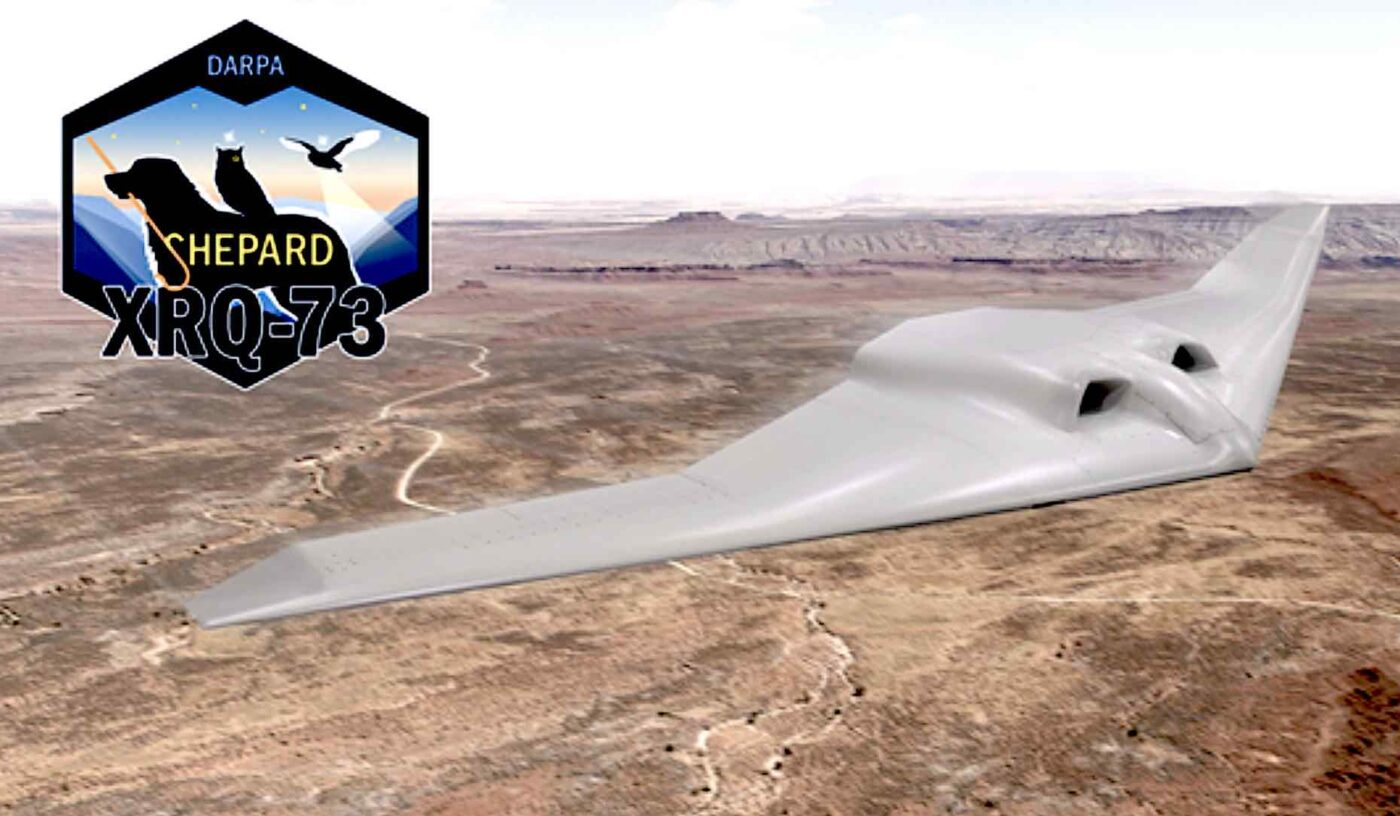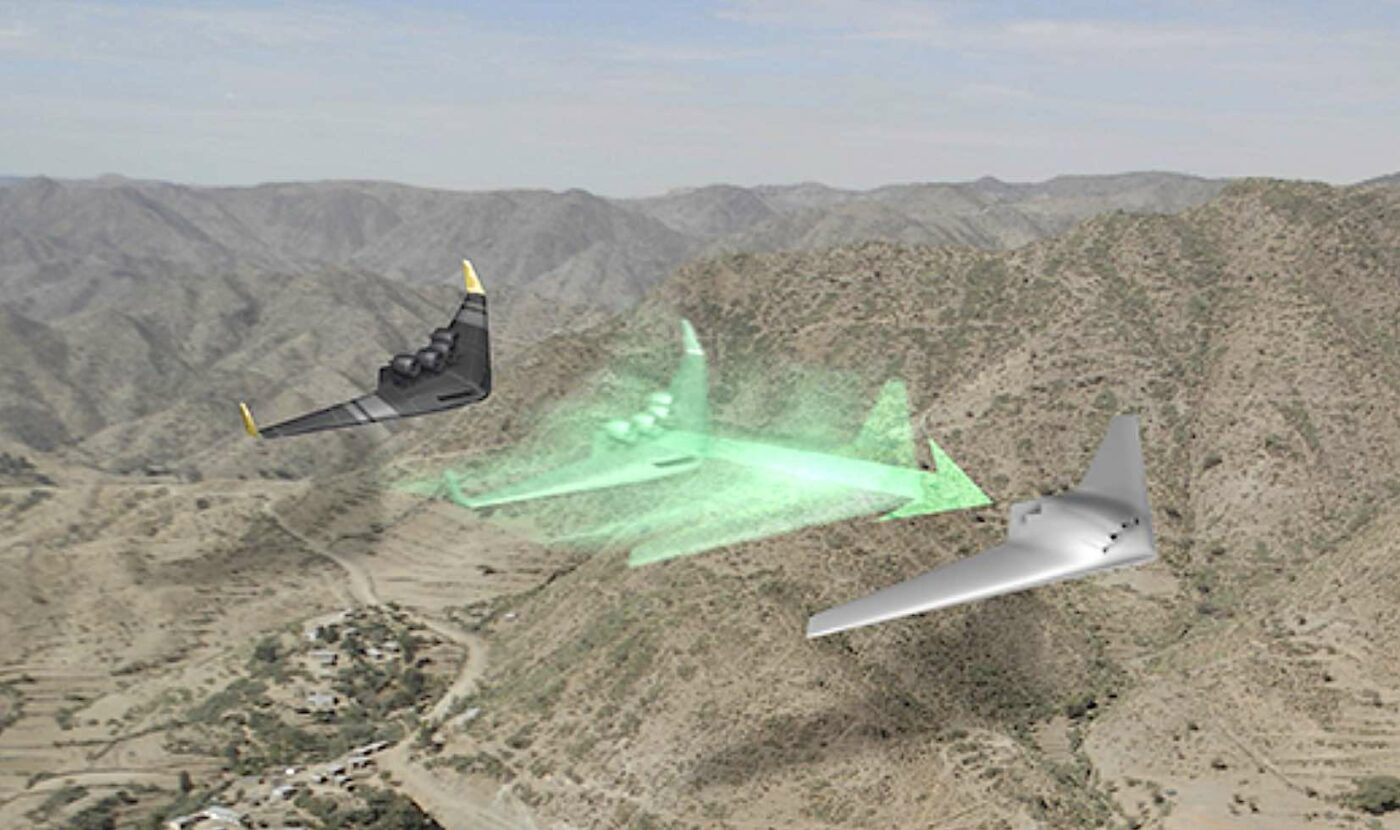
Posted on 06/27/2024 6:14:12 AM PDT by Red Badger

Concept art of the new XRQ-73 (Credit: DARPA)
The Defense Advanced Research Projects Agency (DARPA) has revealed the official designation of a next-generation X-plane it currently has under development.
The aircraft, now officially dubbed the XRQ-73, is part of DARPA’s Series Hybrid Electric Propulsion AiRcraft Demonstration (SHEPARD) program, which the agency defines as an X-prime program.
SHEPARD program manager Steve Komadina said DARPA X-prime programs aim “to take emerging technologies and burn down system-level integration risks to quickly mature a new missionized long endurance aircraft design that can be fielded quickly.”
By utilizing existing hybrid electric architecture and other related technologies from earlier work completed in cooperation with the Air Force Research Laboratory (AFRL) and the Intelligence Advanced Research Projects Activity (IARPA) Great Horned Owl (GHO) project, Komadina says the SHEPARD program will advance “a specific propulsion architecture and power class as an exemplar of potential benefits for the Department of Defense.”
Komadina previously said in a statement that the newly designated XRQ-73 will be a new mission-focused aircraft design, which DARPA is aspiring to have in the air within the next few months. The completed X-plane design will be larger scale than its predecessor X-Plane, the XRQ-72, which was developed under the AFRL and IARPA GHO project.

XRQ-73 Concept art depicting the “evolution” of the XRQ-73 from its predcessor aicraft, the XRQ-72 (Credit: DARPA).
In addition to being a slightly larger aircraft, the new XRQ-72 will feature “operationally representative fuel fraction and mission systems while staying below the Group 3 UAS weight limit,” Komadina said.
The XRQ-72 is just one of the X-planes DARPA is currently developing. It is not to be confused with a similarly named aircraft in a separate, unrelated program. Earlier this year, The Debrief reported on an experimental high-speed, vertical-lift X-plane the agency is developing under another DARPA project, the Speed and Runway Independent Technologies (SPRINT) program.
In May, DARPA revealed new imagery of the SPRINT program’s X-plane, which is presently advancing toward its preliminary design phase. DARPA’s primary contractor on the SPRINT program for the development of its experimental aircraft is Aurora Flight Sciences, a Boeing company.
Weighing just over 7000 pounds, the SPRINT program aircraft, formally designated the X-65, will be a technology demonstrator with a 30-foot wingspan and is expected to reach speeds close to Mach 0.7.
By comparison, the SHEPARD program’s new XRQ-73 aircraft will be a Group 3 Uncrewed Aerial System (UAS) weighing just 1,250 pounds.
Presently, the SHEPARD program is leveraging assets from the AFRL, as well as the Office of Naval Research and other members of the U.S. armed forces as part of its team. DARPA revealed earlier this week that its prime contractor for the program will be Northrop Grumman Corporation’s Aeronautics Systems sector in Redondo Beach, CA.
Based on current timelines, the inaugural flight of the XRQ-73 is expected to occur by sometime before the end of 2024.
==============================================================
Micah Hanks is the Editor-in-Chief and Co-Founder of The Debrief. He can be reached by email at micah@thedebrief.org. Follow his work at micahhanks.com and on X: @MicahHanks.
ELECTRIC AVIATION PING!..............
Flying Crap
Is this a Boeing garbage ping?
:-)
Deal of the Century!
“ELECTRIC AVIATION PING!.”
I wonder if they plan on making Russia and China do the same, or are they just looking for us to get our asses kicked by them?
Anyway, hybrids are fine for cars and are now even more reliable than gas cars (mainly due to the extreme pollution controls needed for gas-only vehicles). And they do GREAT regarding efficiency, due to being able to recover energy that was lost to braking in stop-and-go driving, and the effect of added weight of the hybrid components are relatively small, since it doesn’t have to supported in the air.
BUT, airplanes don’t do as well in stop-and-go flying, so it’s hard to see what benefits will be derived here, other than placating the Extremists who now control our government.
Not this time.
Government Garbage............
The only thing I could think of is stealth enhancement, silent, no heat signature..........................
SHOW ME THE CHARGER !!!!!!!!!!
you do realize electric motors still get hot
Lot’s of cooling air at 50,000+ feet.................
This ^^^^^^^ ...
... at least until the battery pack catches fire.
You obviously don't realize how piddling "hot" electric motors are compared to jet engines. The burning fuel in the combustion can of a jet engine gets as hot as 3600°F, and the exhaust gas at the engine exit (which is completely visible in ordinary a/c) can be 1000°F.
Show me your electric motor that can match those numbers.
Regardless, the temperature of the engine itself is irrelevant compared to the heat of its exhaust gasses because the a/c's skin can be shielded from the engine's heat, but there's no getting around the fact that at some point you've got dump the jet engine's 1000° exhaust overboard.
And that's a dramatically bigger ask than disguising anything coming off an electric motor.
The XRQ-73's only "visible" sources of heat will be the air getting heated as it passes through the ducted propulsion fans, and the heating of the a/c's skin from aerodynamic drag.
If it is Boeing it will be not be going...
Anywhere.
This is bribes creating corporate welfare.
ok lil boy
IT'S A HYBRID!!!!!!!!!!!!!!!!!
It charges its battery using a jet engine-based APU, switches to pure electric for the stealthiest part of the mission, then APU back on for the return trip home.
The drone must be manufactured by Luckup!
Yes, that makes sense, avoid IR emissions during stealthy phase of flight. Disclosure: I haven’t read The Debrief or The War Zone articles yet.
When you do, you'll find that this is a tiny aircraft, total weight with mission equipment estimated to be 1,270 lbs., which makes this much more doable on a small scale.
Bypass flow and lateral diffusion can cool the exhaust substantially but certainly not comparable to the reduction from just shutting down the turbine!
Disclaimer: Opinions posted on Free Republic are those of the individual posters and do not necessarily represent the opinion of Free Republic or its management. All materials posted herein are protected by copyright law and the exemption for fair use of copyrighted works.